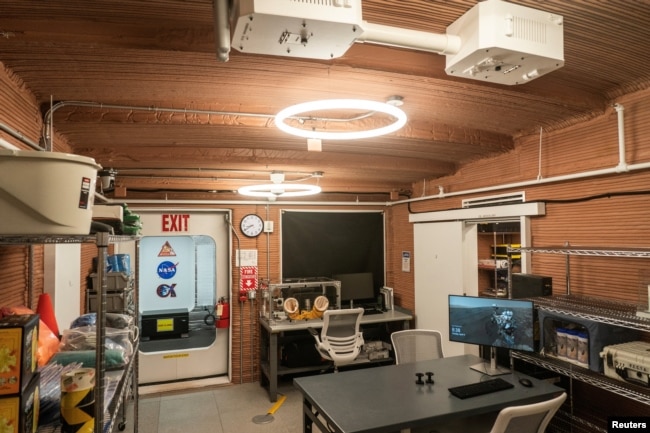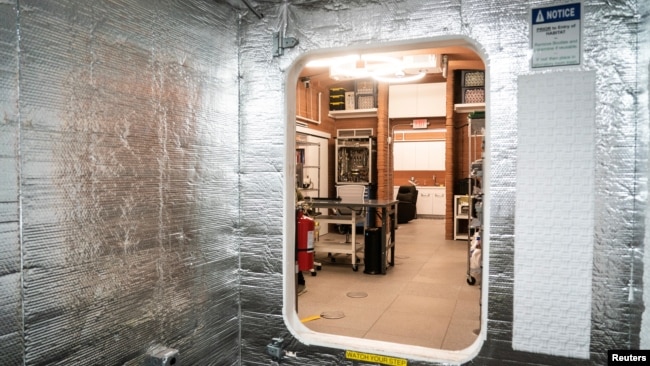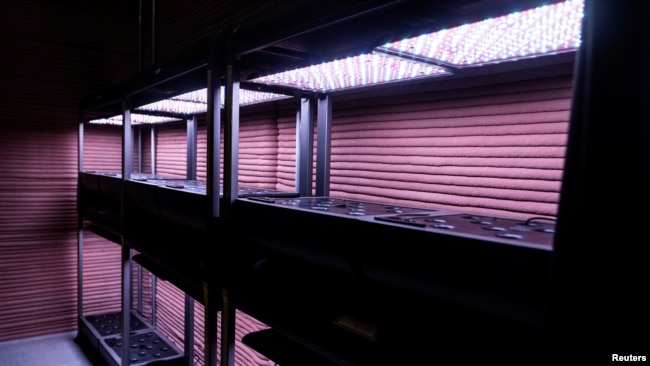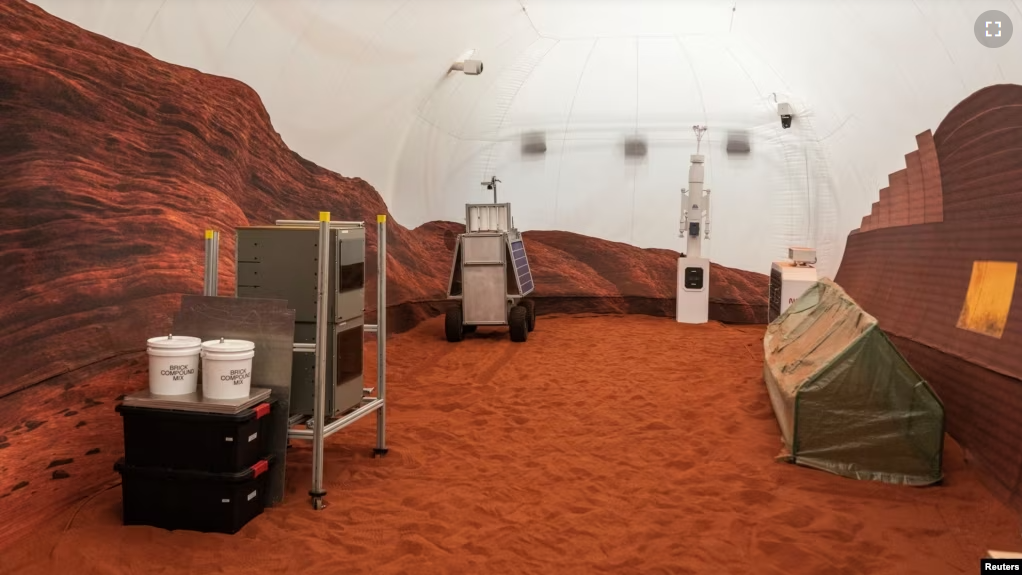NASA showed off a simulated Mars environment this month where four volunteers will live for one year to help the American space agency prepare to send humans to the planet.
The volunteers, who are not astronauts, are expected to enter the environment, called a habitat, in June. It was built at a major research base at NASA’s Johnson Space Center in Houston.
During their stay, crew members will take part in many different activities, NASA said in a statement. This will include taking part in simulated spacewalks, doing robotic work, caring for the habitat, exercising and planting crops.

The 160-square-meter habitat is also designed to recreate environmental pressures that future visitors to Mars could face. Examples of this will be carrying out activities with limited resources, being isolated and experiencing equipment failures, NASA said.
The simulated environment was built using 3D printing technology. 3D printers have been used in recent years to build increasingly large structures, including entire homes.
The Mars habitat is part of a NASA program known as the Crew Health and Performance Exploration Analog (CHAPEA). It is expected to include a total of three simulated environments.
Grace Douglas is the lead researcher of the CHAPEA experiments. She told the French news agency AFP that NASA has been looking at 3D printing technology as a possible way “to build habitats on other planetary or lunar surfaces.”
NASA officials are still in the early stages of preparing for a mission to Mars. However, most of the agency’s current efforts support upcoming Artemis missions, which aim to return humans to the Moon for the first time in half a century.
While in the habitat, NASA workers will continuously follow the volunteers’ physical and mental health.

With that data, NASA will be better equipped to study how astronauts can learn to use only the resources they have, Douglas said. “We can really start to understand how we’re supporting them with what we’re providing them,” she said. “And that’s going to be really important information to making those critical resource decisions,” she added.
The habitat includes an “outdoor” area that simulates the Martian surface and environment. That area, however will still be within the simulated environment.

The volunteers who will take part in the first experiment have not yet been named. NASA says the process of choosing the individuals will follow the same guidelines that are used to choose astronauts. The team members will be expected to have rich backgrounds in science, technology, engineering and math.
In addition, only American citizens or permanent U.S. residents can be chosen. Interested individuals have to be between 30 and 55 years old, in good physical health and have no dietary issues or motion sickness.
Former Canadian astronaut Chris Hadfield told The Associated Press in 2021 that he thinks the requirements show that NASA is looking for people who are close to being astronauts. That, he noted, is a good thing because it will make the experiment better.

A past Russian effort to create a simulated Mars environment, called Mars 500, was not highly successful, Hadfield said. This is because the people involved were too much like everyday people, he added.
For the right person this could be great, Hadfield said. He spent five months in orbit in 2013 at the International Space Station.
“Just think how much you’re going to be able to catch up on Netflix,” Hadfield joked. “If they have a musical instrument there, you could go into there knowing nothing and come out a concert musician, if you want,” he added.
I’m Bryan Lynn.
The Associated Press and Reuters reported this story. Bryan Lynn adapted the reports for VOA Learning English.
Quiz – NASA Shows Mars Habitat where Four People Will Live for One Year

Start the Quiz to find out
___________________________________________________________
Words in This Story
simulate – v. do or make something that behaves or looks like something real but is not
isolate – v. separate someone or something from other people or things
mission – n. a flight by an aircraft or spacecraft to perform a specific task
dietary – n. things related to a person’s diet
concert – n. a performance of music and or singing
